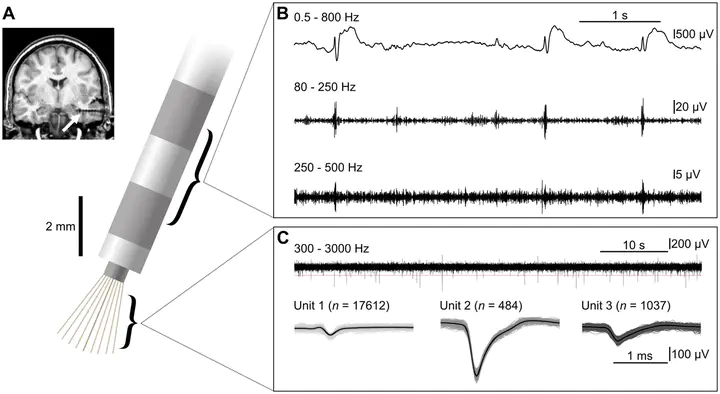Interictal spikes with and without high-frequency oscillation have different single-neuron correlates

Abstract
Interictal epileptiform discharges (IEDs) are a widely used biomarker in patients with epilepsy but lack specificity. It has been proposed that there are truly epileptogenic and less pathological or even protective IEDs. Recent studies suggest that highly pathological IEDs are characterized by high-frequency oscillations (HFOs). Here, we aimed to dissect these ‘HFO-IEDs’ at the single-neuron level, hypothesizing that the underlying mechanisms are distinct from ‘non-HFO-IEDs’. Analysing hybrid depth electrode recordings from patients with temporal lobe epilepsy, we found that single-unit firing rates were higher in HFO- than in non-HFO-IEDs. HFO-IEDs were characterized by a pronounced pre-peak increase in firing, which coincided with the preferential occurrence of HFOs, whereas in non-HFO-IEDs, there was only a mild pre-peak increase followed by a post-peak suppression. Comparing each unit’s firing during HFO-IEDs to its baseline activity, we found many neurons with a significant increase during the HFO component or ascending part, but almost none with a decrease. No such imbalance was observed during non-HFO-IEDs. Finally, comparing each unit’s firing directly between HFO- and non-HFO-IEDs, we found that most cells had higher rates during HFO-IEDs and, moreover, identified a distinct subset of neurons with a significant preference for this IED subtype. In summary, our study reveals that HFO- and non-HFO-IEDs have different single-unit correlates. In HFO-IEDs, many neurons are moderately activated, and some participate selectively, suggesting that both types of increased firing contribute to highly pathological IEDs.